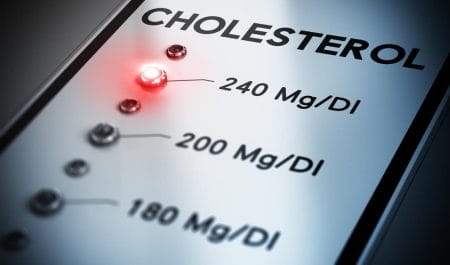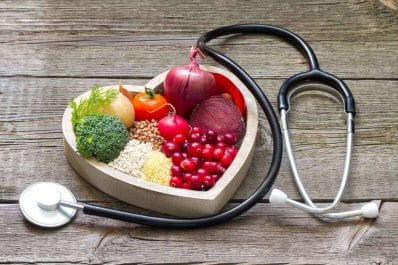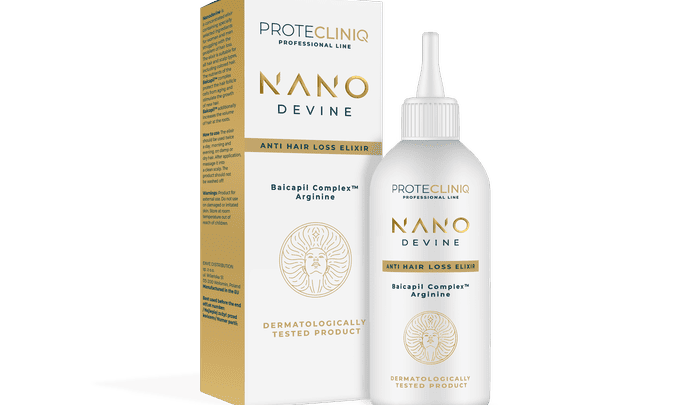
High serum cholesterol, causes and symptoms of elevated levels, natural methods to lower them
Many people make the mistake of thinking that cholesterol is evil itself, a compound that only harms our body. However, the truth is different, the appropriate level of cholesterol in the blood is even necessary for our health, and it is the LDL cholesterol, the so-called bad fraction, that is harmful, and it is absolutely necessary to reduce its amount. However, too high a level almost immediately begins to feel unfavorable, leads to the development of many dangerous diseases, can sometimes even be life-threatening. Therefore, it is necessary to regularly examine the level of cholesterol and triglycerides in the blood serum and immediately react to any alarming changes.
Contents
- 1 What is cholesterol and what is the importance for the body of a normal concentration of HDL cholesterol in the blood?
- 2 Acceptable standards, exceedance of which is an indication for serum cholesterol and triglyceride testing
- 3 What causes elevated blood cholesterol levels?
- 4 What are the symptoms of high cholesterol?
- 5 Natural methods to lower high cholesterol
What is cholesterol and what is the importance for the body of a normal concentration of HDL cholesterol in the blood?

Before we address the presentation of the effects of too high levels of “bad cholesterol” and the positive effects of “good cholesterol”, we should first learn what important functions it has in the human body and how it can affect health. Cholesterol is a chemical compound included in the sterol group, in our body it is naturally synthesized in the liver, and its possible deficiency is supplemented by maintaining a proper diet or taking dietary supplements having it in their composition. Cholesterol is divided into two basic groups, called fractions, which differ precisely in the way they affect the body, and these are:
- HDL fraction, called “good cholesterol”, is also known as high-density lipoprotein;
- fractionLDL, better known as “bad cholesterol”, or low-density lipoproteins.
We will present thenegative effects of the LDL fra ction later in the text, first it is necessary to know what functions HDL cholesterol performs, and among the most important may be:
- regulating the work of many important internal systems and organs;
- preventing the development of dangerous cardiovascular diseases, reducing the risk of coronary heart disease, atherosclerosis or heart attack;
- having a positive effect on the entire cardiovascular system;
- maintaining the proper functioning of the brain and nervous system;
- Participation in the production of fatty acids;
- Transporting LDL cholesterol molecules to the liver, where they are broken down;
- participating in the synthesis of essential vitamin D3, progesterone, cholesterol itself, cortisol and estrogen, important steroid hormones;
- Supporting the digestion of fats;
- increasing the absorption of fat-soluble vitamins, vitamin A, vitamin D and vitamin E.
Acceptable standards, exceedance of which is an indication for serum cholesterol and triglyceride testing
Cholesterollevels that aretoo high pose such a serious health risk that if any symptoms are observed, it is imperative to consult a doctor, who will order testing, both of the LDL fraction cholesterol and HDL levels. The test is called a lipidogram, and in addition to the two switched fractions, it also includes what is known as total cholesterol and serum triglyceride levels, and the individual standards specified by specialists are:
Total cholesterol
In this case, the level of total cholesterol is the same for men and women and should not exceed <190 mg/dl.
Cholesterol LDL
Here again, there is no distinction by gender and the LDL cholesterol level should be <115 mg/dl.
Cholesterol HDL
Only this beneficial fraction has different standards for men and women, which are:
- for women >45 mg/dl;
- for men >40 mg/dl.
Triglycerides
Triglycerides, abbreviated TG or by the name triglycerides, are an important component of adipose tissue, primarily a source of energy for the body, and the recommended triglyceride level should be 150-199 mg/dl.
What causes elevated blood cholesterol levels?

Not everyone is automatically at risk of having too high cholesterol in the blood, it most often happens to people in the so-called high-risk group, such as those suffering from hypercholesterolemia, a condition that occurs in two varieties, primary and secondary. The cause of the development of the first is most often genetic, the inheritance of a susceptibility to mutations in the LDL receptor gene, and the second can be caused by certain groups of drugs, is also a symptom of comorbidities such as. hypothyroidism, and the result of an unhealthy lifestyle.
Of course, hypercholesterolemia is not the only reason that we begin to complain about the effects of elevated cholesterol. Very often we are guilty of it ourselves, living, for example, in constant stress, and the disturbing changes are also the result of such negligence as:
Lack of physical activity
Sedentary lifestyle, lack of physical activity, not only causes overweight and obesity, it also reflects adversely on the lipid profile. If we don’t move then both LDL cholesterol and triglycerides can rise dangerously. So it’s worth moving from home, and even a daily walk will change this unfavorable state of affairs, allow us to maintain a healthy weight, avoid the risk of heart disease and activate the synthesis of enzymes responsible for reducing cholesterol itself. The best solution is regular activity, and studies have shown that it can reduce LDL cholesterol by 15%, with a concomitant increase in HDL by nearly 20%, and this after just a few months of exercise.
Improper diet
Of no small importance in achieving safe cholesterol levels is a proper diet, which is often far from the recommendations of nutritionists and other specialists. The diet is dominated by everything unhealthy, and highly processed foods are responsible for the long-term maintenance of elevated LDL levels, equally harmful are smoking and drinking alcohol, and such foods as:
- fatty meat and its products, cold cuts, bacon, bacon fat, sausages or pates;
- offal;
- fatty milk and cheeses made from it, including melted cheese and cottage cheese with a high fat content;
- fatty fish;
- deep-fried foods;
- trans fats of animal origin;
- fast food, hamburgers, pizza or hot dogs;
- sweets containing large amounts of white sugar;
- similarly sweetened carbonated beverages;
- unhealthy snacks, cookies, chips or finger foods.
What are the symptoms of high cholesterol?
Lots of outdoor exercise and a well-balanced, healthy diet can quickly and effectively lower cholesterol levels. Absolutely should not be underestimated, if you disregard the results of the tests, then you have to reckon with serious symptoms of high cholesterol:
- ailments that may indicate the development of cardiovascular disease;
- increased risk of stroke and myocardial infarction;
- severe pain and a feeling of pressure in the chest;
- pain, numbness and cramping in the legs, especially the calves;
- changes in the skin of the feet, which becomes tight and shiny;
- cold feet;
- risk of developing atherosclerosis, which causes an increase in the number of atherosclerotic plaques in the blood, and at the highest risk are people with diabetes;
- impaired healing of wounds and ulcers, especially on the feet.
Natural methods to lower high cholesterol
Treatment of high cholesterol is most often done by pharmacological methods, which are ordered by a doctor on the basis of tests and their effectiveness we will not deny. You can also try to reduce the level of this compound in a natural way, and a great deal depends on our lifestyle, first of all, diet. When it comes to natural methods to reduce cholesterol in the blood, the best is:
Diet to lower cholesterol

By far the most important, and we already know what foods and foods we should absolutely avoid. They need to be replaced with healthy counterparts and in our daily menu, a healthy and balanced diet must include:
- lean poultry meat and fish with a lower fat content, rich in Omega-3 acids;
- polyunsaturated fatty acids;
- healthy oils, and the best cholesterol-lowering flaxseed oil or extra virgin extra-virgin olive oil;
- vegetables that have high amounts of fiber, legumes, carrots, potatoes, eggplants;
- fruits with a high content of vitamin C, a powerful antioxidant, grapefruits, plums, strawberries, apples, avocados;
- different varieties of nuts with which to replace unhealthy and fattening snacks, hazelnuts, walnuts, cashews or Brazil nuts;
- green tea;
- mineral water instead of sweet carbonated drinks;
- whole-grain dark bread.
Such a diet will not only allow us to maintain proper cholesterol levels in the body, especially when combined with a good dose of daily physical activity. We will also manage to maintain the correct body weight, in accordance with the calculated BMI, and enjoy a slim, athletic figure without a gram of unnecessary fat.
Herbs to reduce excessively high cholesterol levels
Followers of phytotherapy, or herbal medicine, can fight their high cholesterol with the help of many popular herbs and plants with medicinal properties. Used in the form of infusions or as an ingredient in dietary supplements, they show high efficacy, and in this case the best performer is:
- artichoke, which supports liver function and bile acid production, and has an antioxidant effect;
- common garlic, fully deservedly considered a powerful natural antibiotic with broad health-enhancing effects;
- fenugreek, with anti-inflammatory, decongestant, choleretic and blood sugar-reducing effects;
- Milkthistle, which lowers the amount of cholesterol fraction LDL and raises the beneficial fraction HDL;
- ginger, effective not only for the common cold or flu thanks to its anti-inflammatory and antipyretic effects, also shows great effectiveness on cholesterol and triglycerides;
- green tea, one of the best-loved varieties, also causing a reduction in LDL cholesterol by as much as 0.64 mmol/l, and total cholesterol by 0.62 mmol/l;
- white mulberry even sweeping harmful cholesterol out of the body, lowering triglycerides and improving unfavorable lipid profile;
- dandelion, which counteracts aggregation, or the clumping of platelets, showing effectiveness in reducing bad cholesterol and raising good cholesterol.
Sources:
- https://www.healthline.com/nutrition/7-healthy-high-cholesterol-foods
- https://www.healthline.com/health/high-cholesterol-symptoms
- https://www.healthline.com/health/high-cholesterol
- https://www.healthline.com/health/high-cholesterol/does-stress-affect-cholesterol
- https://www.healthline.com/health/high-cholesterol/herbs-for-atherosclerosis



